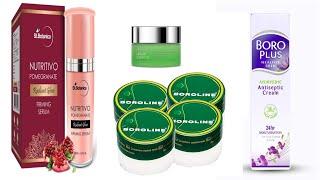Inside The Ice Cream Factory #part 1| How To Make Ice Cream in 2020 Full Video
Description
Inside The Ice Cream Factory #part1| How To
Please Subscribe My Another Exciting YouTube Channel
To Subscribe YouTube Channel Click Here:https://www.youtube.com/channel/UCq8rK6kaox6t6z1iXwXOW6w?view_as=subscriber
The Manufacturing Process:-
Although ice cream is available in a variety of forms, including novelty items such as chocolate-dipped bars and sandwiches, the following description applies to ice cream that is packaged in pint and half-gallon containers.
Blending the mixture:-
1 The milk arrives at the ice cream plant in refrigerated tanker trucks from local dairy farms. The milk is then pumped into 5,000 gal (18,925 1) storage silos that are kept at 36°F (2°C). Pipes bring the milk in pre-measured amounts to 1,000 gal (3,7851) stainless steel blenders. Premeasured amounts of eggs, sugar, and additives are blended with the milk for six to eight minutes.
Pasteurizing to kill bacteria:-
2 The blended mixture is piped to the pasteurization machine, which is composed of Ice Cream of a series of thin stainless steel plates. Hot water, approximately 182°F (83°C), flows on one side of the plates. The cold milk mixture is piped through on the other side. The water warms the mixture to a temperature of 180°F (82°C), effectively killing any existing bacteria.
Homogenizing to produce a uniform texture:-
3 By the application of intensive air pressure, sometimes as much as 2,000 pounds per square inch (141 kg per sq cm), the hot mixture is forced through a small opening into the homogenizer. This breaks down the fat particles and prevents them from separating from the rest of the mixture. In the homogenizer, which is essentially a high-pressure piston pump, the mixture is further blended as it is drawn into the pump cylinder on the down stroke and then forced back out on the upstroke.
Cooling and resting to blend flavors:-
4 The mixture is piped back to the pasteurizer where cold water, approximately 34°F (1°C), flows on one side of the plates as the mixture passes on the opposite side. In this manner, the mixture is cooled to 36°F (2° C). Then the mixture is pumped to 5,000 gal (18,925 1) tanks in a room set at 36°F (2°C), where it sits for four to eight hours to allow the ingredients to blend.
Flavoring the ice cream:-
5 The ice cream is pumped to stainless steel vats, each holding up to 300 gal (1,136 1) of the mixture. Flavorings are piped into the vats and blended thoroughly.
Freezing to soft-serve consistency:-
6 Now the mixture must be frozen. It is pumped into continuous freezers that Ice Cream can freeze up to 700 gal (2,650 1) per hour. The temperature inside the freezers is kept at -40°F(-40°C), using liquid ammonia as a freezing agent. While the ice cream is in the freezer, air is injected into it. When the mixture leaves the freezer, it has the consistency of soft-serve ice cream.
Adding fruit and sweetened chunks:-
7 If chunks of food such as strawberry or cookie pieces are to be added to the ice cream, the frozen mixture is pumped to a fruit feeder. The chunks are loaded into a hopper at the top of the feeder. Another, smaller hopper, fitted with a starwheel, is located on the front of the feeder. An auger on the bottom of the machine turns the hoppers so that the chunks drop onto the starwheel in pre-measured amounts. As the mixture passes through the feeder, the starwheel pushes the food chunks into the ice cream. The mixture then moves to a blender where the chunks are evenly distributed.
Packaging and bundling the finished product:-
8 Automatic filling machines drop preprinted pint or half-gallon-sized cardboard cartons into holders. The cartons are then filled with premeasured amounts of ice cream at the rate of 70-90 cartons per hour. The machine then places a lid on each carton and pushes it onto a conveyer belt. The cartons move along the conveyer belt where they pass under an inkjet that spray-paints an expiration date and production code onto each carton. After the imprinting, the cartons move through the bundler, a heat tunnel that covers each cup with plastic shrink wrapping.
Hardening:-
9 Before storage and shipping, the ice cream must be hardened to a temperature of -10°F (-23°C). The conveyor system moves the ice cream cartons to a tunnel set at -30°F (-34°C). Constantly turning ceiling fans create a wind chill of -60°F (-5 1°C). The cartons move slowly back and forth through the tunnel for two to three hours until the contents are rock solid. The cartons are then stored in refrigerated warehouses until they are shipped to retail outlets.
Quality Control:-
Every mixture is randomly tested during the production process. Butterfat and solid levels are tested. The bacteria levels are measured. Each mixture is also taste-tested.
Ice cream producers also carefully monitor the ingredients that they purchase from outside suppliers.





















Comments